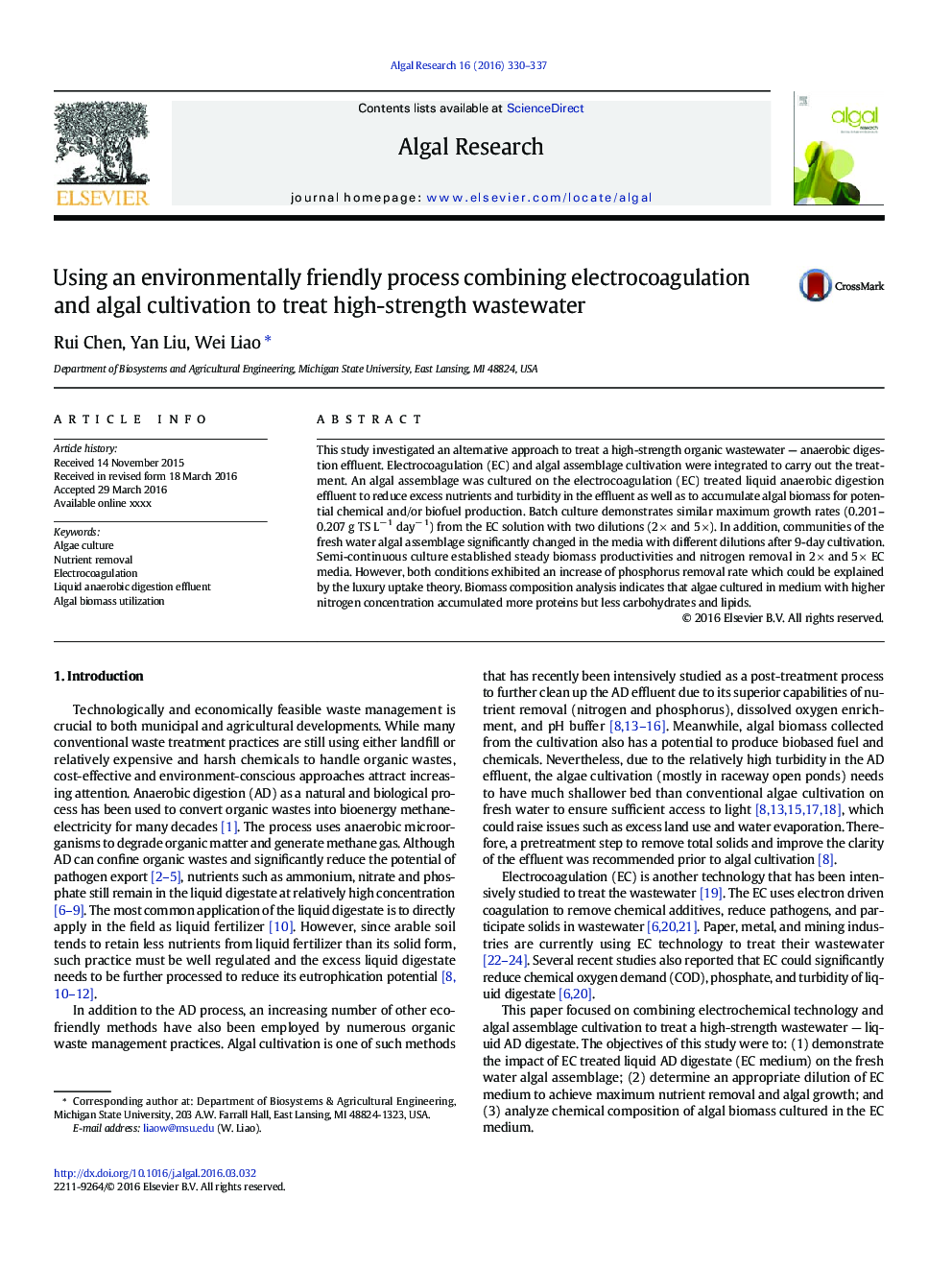| Article ID | Journal | Published Year | Pages | File Type |
|---|---|---|---|---|
| 8087083 | Algal Research | 2016 | 8 Pages |
Abstract
This study investigated an alternative approach to treat a high-strength organic wastewater - anaerobic digestion effluent. Electrocoagulation (EC) and algal assemblage cultivation were integrated to carry out the treatment. An algal assemblage was cultured on the electrocoagulation (EC) treated liquid anaerobic digestion effluent to reduce excess nutrients and turbidity in the effluent as well as to accumulate algal biomass for potential chemical and/or biofuel production. Batch culture demonstrates similar maximum growth rates (0.201-0.207 g TS Lâ 1 dayâ 1) from the EC solution with two dilutions (2 à and 5 Ã). In addition, communities of the fresh water algal assemblage significantly changed in the media with different dilutions after 9-day cultivation. Semi-continuous culture established steady biomass productivities and nitrogen removal in 2 à and 5 à EC media. However, both conditions exhibited an increase of phosphorus removal rate which could be explained by the luxury uptake theory. Biomass composition analysis indicates that algae cultured in medium with higher nitrogen concentration accumulated more proteins but less carbohydrates and lipids.
Related Topics
Physical Sciences and Engineering
Energy
Renewable Energy, Sustainability and the Environment
Authors
Rui Chen, Yan Liu, Wei Liao,
